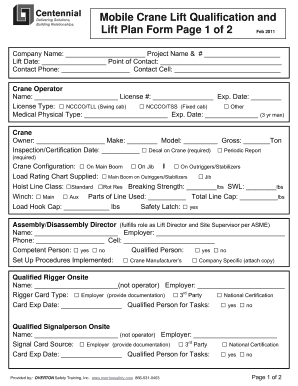
Anything contained inside the loads should be recorded-are there objects that could shift or slide? Are there any hazardous materials involved? The lifting points should be identified and inspected to make sure they’re stable and in good quality. This includes the dimensions, weight, and center gravity of all loads.

They make sure a plan is in place before the lift is ever started, leaving as little as possible up to chance.Īs mentioned above, the details of a lift plan are largely determined by the unique circumstances of the job however, there are several things that should be present in a lift plan no matter what. Lift plans are necessary to ensure the safety of all involved parties, from the crane operator to the employees on the ground. While every lift needs a lift plan, the extensiveness of the plan depends on the difficulty of the job the plans for a critical lift will be much more detailed than those of a standard lift, as critical lifts have little margin for error. The process of developing a lift plan helps determine if the job is a critical lift by assessing factors like load weight and the involvement of multiple cranes. There are three basic types of lifts: standard, non-standard, and critical. It serves as a guide to follow during the job and keeps all the information in one place, where it can be easily accessed and reviewed by the parties involved in the lift. The best way to ensure this is by developing a lift plan.Ī lift plan is exactly what the name implies-a comprehensive plan that assess the various risks, methods, and complicating factors of a job. No matter the job, the construction crew needs to be confident and know exactly what to expect while the lift is being executed.

Sure, the pros make it look easy, but performing a lift with a crane takes extensive planning and the utmost regard for safety.


 0 kommentar(er)
0 kommentar(er)
